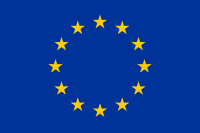Observatory Online Co-Creation Workshop
Developing spaces for digital collaboration and sharing
Observations from Rome Kick off meeting and COVID19
This last winter the inDICEs partners came together for a kickoff meeting to begin the groundwork for co-created observatory to collaborate and develop practices, methods, and resources to support more open access to digitising culture and its creation within public institutions.
Several workshops were held to assess the sentiments, ideas, and preferences of the partners involved including creating profiles of actors and organizations interested in having a more nuanced understanding of their needs. For example, incredibly obvious from the data is the need for more streamlined access to data and fact sheets in order to benchmark progress within a cultural heritage institutions or create better policy for policy makers. So while the internet seems to be a place of open access to limitless information, a need to have more curated and applicable information and data has been identified.
In line with the activities certain profiles were highlighted such as individuals who work with cultural heritage institutions (CHI), policy makers, artists and cultural heritage makers, and researchers. The most prevalent interest for those working with CHIs was the need for more resources to follow how other CHIs are managed and changing, and tools that give greater clarity when benchmarking their own progress such as surveys and interactive tools for visitors or reports from other CHIs. When speaking about artists, their needs and desires were varied. Perhaps what stood out was the need to engage and amplify their impact whether it be terms of audience or collaboration with other actors and institutions. Interaction seemed to be at the crux of what would best serve and artist or artist communities interest and sustainability. The most straightforward need expressed was that of researchers who voiced that data sets and access to contacts for interviews were what they might prioritize within the observatory, rather than any collaboration or participatory process. So while the observatory is open to participatory practices, what seemed evident was an inclination towards more curated content, accessible contacts, streamlined conversations and work areas and collaborations.
Distinct results appeared, however, when rather than classify participants within the platform according to their job role, they were classified as a professional or citizen participant. Some of the more surprising results were that professionals in pursuit of a challenge rated a ‘safe environment’ and transparency as the lowest priority and the highest priority being collaboration within a community and motivation or engagement within a project. Whilst citizen rated transparency as their highest priority.
Creating the observatory will in the end require negotiating this different interests especially in terms of developing an ethical compass that can both protect personal data, be managed transparently, while still maintaining spaces for enriching challenges, learning and collaboration.
However, with the phenomena of COVID19 much of the activities that would have take place in person have to be migrated and negotiated online which presents new challenges and opportunities. COVID19 has demanded that we create new ways to work online and also an urgency in terms of organizing and reorienting to continue the work that started in January 2020. Moreover, much of these new circumstances have also required different approaches to work and care. To capture these conversations and ideas we have created the COVID19 assembly to generate ideas, conversations, and collaborations that might arise.






Dettagli commento
Stai vedendo un singolo commento
Visualizza tutti i commenti
I really amazed to read this blog post. It is so unique and informative. Varsity Jackets :
https://www.filmsjackets.com/varsity-jackets
Sto caricando i commenti ...